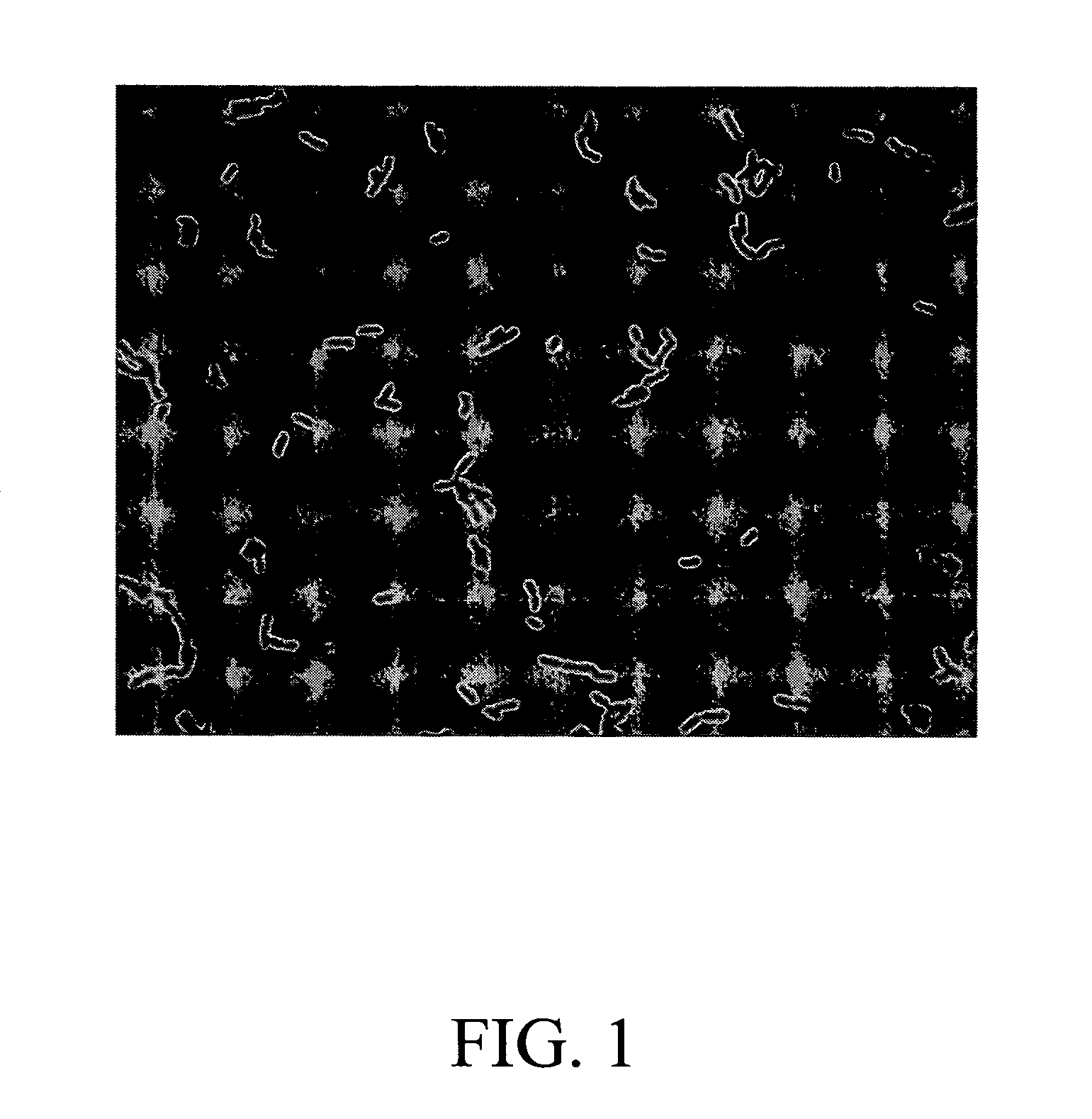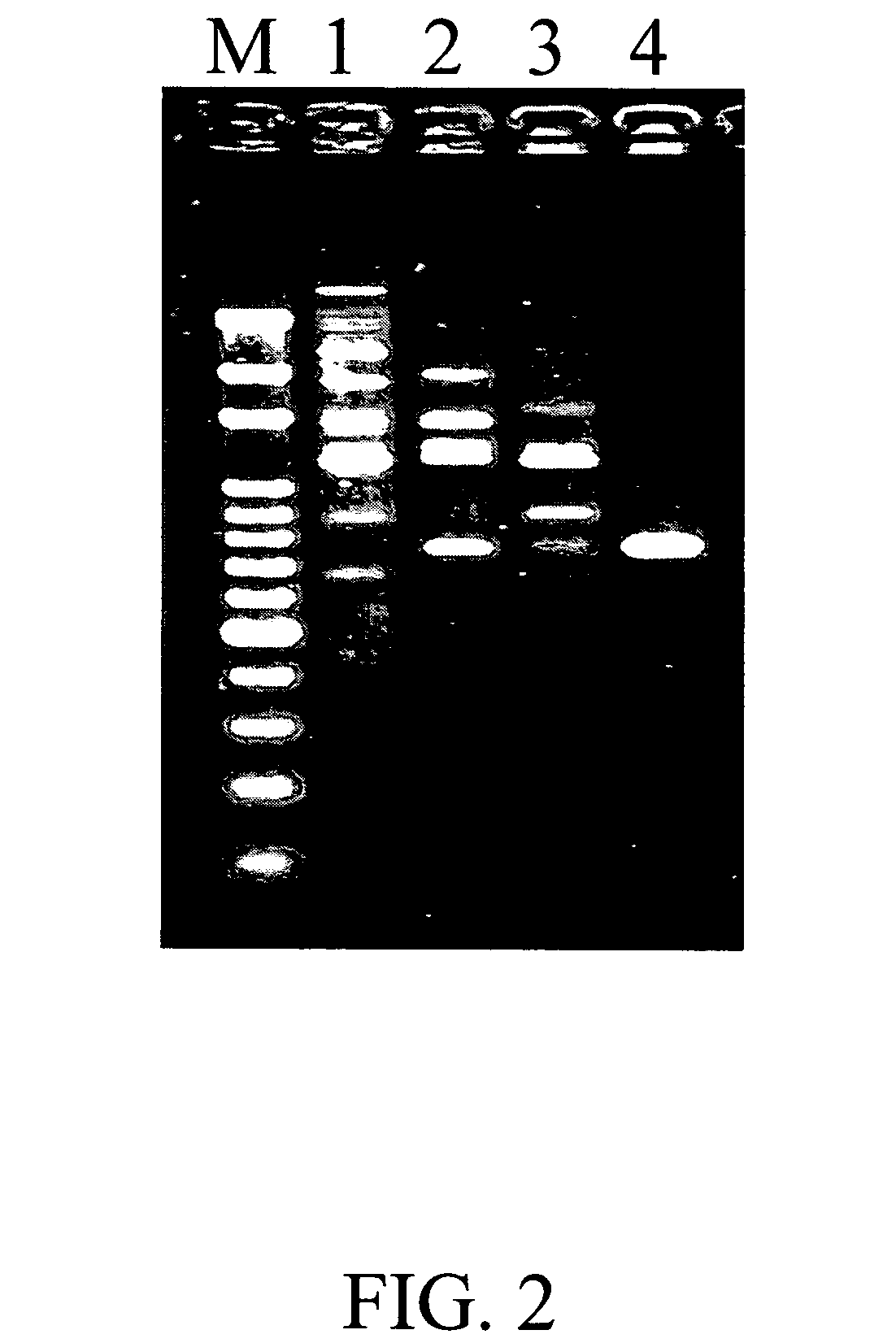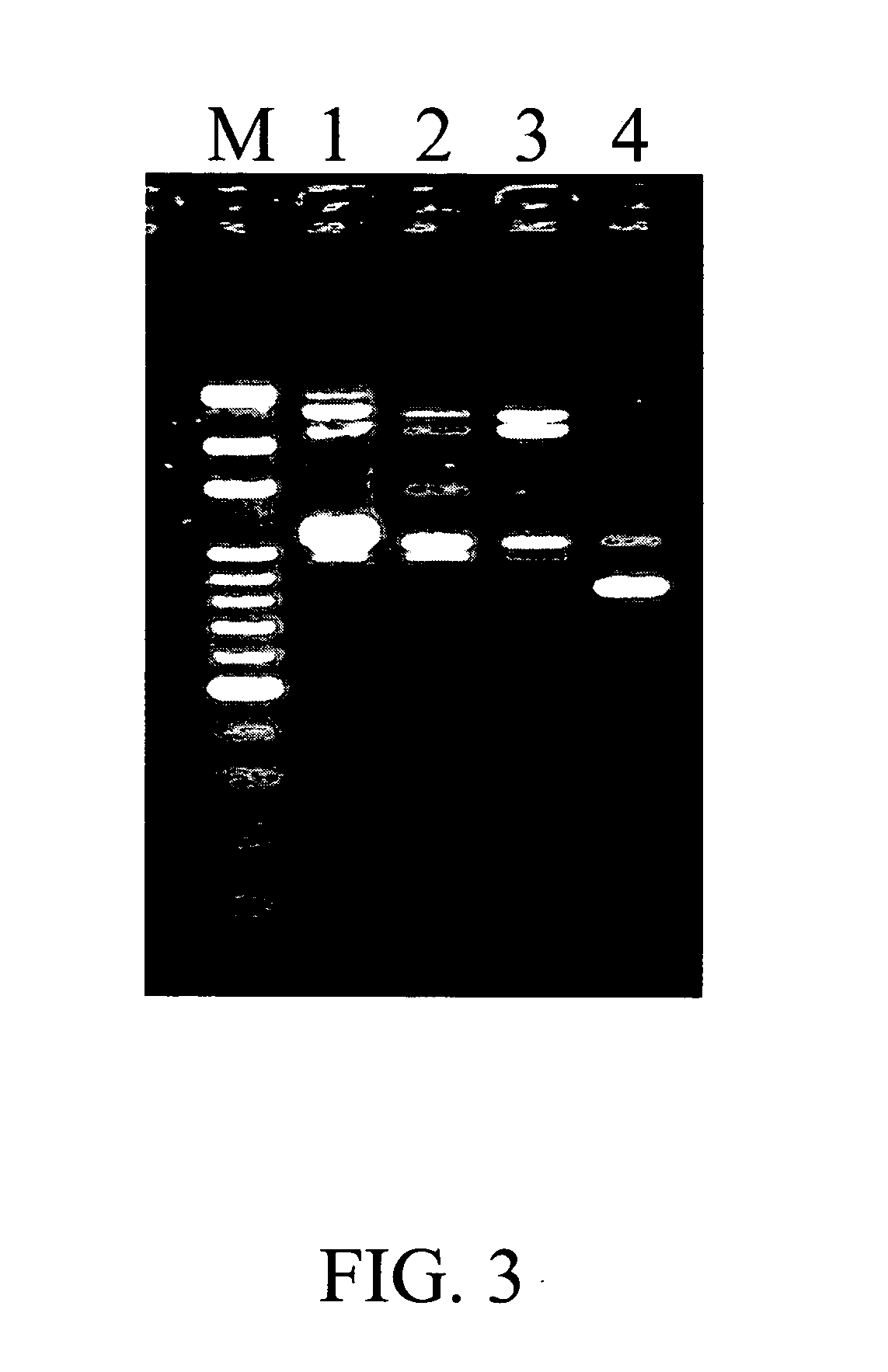Novel microorganism strain GM-090 of Lactobacillus fermentum and its use for stimulating IFN-y secretion and/or treating allergy
- Summary
- Abstract
- Description
- Claims
- Application Information
AI Technical Summary
Problems solved by technology
Method used
Image
Examples
example 1
Isolation of Lactobacillus fermentum GM-090
[0049] A piece of human stomach tissue taken by an endoscope was cultured in 2 mL of Lactobacillus MRS Broth (DIFCO® 0881). The broth containing the tissue was plated on Lactobacillus selective agar and incubated at 37° C. for one day. Single colony growing on the plate was selected and subjected to Gram-stain. Gram-positive bacteria were then selected. One strain, called as Lactobacillus fermentum GM-090, was cloned.
example 2
[0050] Gram staining was performed according to manuscript of Gram-color staining set for Gram stain (MERCK®, Darmstadt, Germany). The bacteria were first stained with crystal violet for 1 min, and then treated with Lugol's solution for 1 min. The sample was carefully rinsed with distilled water for about 5 s. The slide was swirled for about 10-15 s in solution 3 or 4 for decolorisation solution. Swirling was stopped when no more dye was released and the smear appeared greyish-blue. The sample was carefully rinsed again with distilled water for about 5 s. The slide was completely covered with solution 5, safranin solution, for 1 min. The sample was carefully rinsed with distilled water for about 5 s. After the sample was dry, it was subject to examine under a microscopy.
[0051] The result of examining under a microscopy was shown in FIG. 1.
example 3
16s rDNA Sequence Determination
[0052] The Lactobacillus species specific primers were used to identify the species of the strain GM-090 according to Yeung et al (2002). Briefly, the primers PAF (5′-AGA GTT TGA TCC TGG CTC AG-3′, SEQ ID NO: 2) and 536R (5′-GTA TTA CCG CGG CTG CTG-3′, SEQ ID NO: 3) were used to amplify the 5′ region of the 16S rDNA gene. PCR was performed in an iCycler (Bio-Rad® Laboratories Inc.). The amplification was programmed as follows: preincubation at 94° C. for 2 min, followed by 40 cycles at: 94° C. for 45 s, 55° C. for 45 s, and 72° C. for 60 s. After these cycles, the reaction was maintained at 72° C. for 7 min and then cooled to 4° C. The PCR product was separated on a 1.5% agarose gel, eluted and auto sequenced. The oligonucleotide sequences were used to search the GenBank (National Center of Biotechnology information, www.ncbi.nlm.nih.gov) for homologous sequences.
[0053] The sequence of 16s rDNA of GM-090 was identical to that of L. fermentum strain P...
PUM
 Login to View More
Login to View More Abstract
Description
Claims
Application Information
 Login to View More
Login to View More - Generate Ideas
- Intellectual Property
- Life Sciences
- Materials
- Tech Scout
- Unparalleled Data Quality
- Higher Quality Content
- 60% Fewer Hallucinations
Browse by: Latest US Patents, China's latest patents, Technical Efficacy Thesaurus, Application Domain, Technology Topic, Popular Technical Reports.
© 2025 PatSnap. All rights reserved.Legal|Privacy policy|Modern Slavery Act Transparency Statement|Sitemap|About US| Contact US: help@patsnap.com



